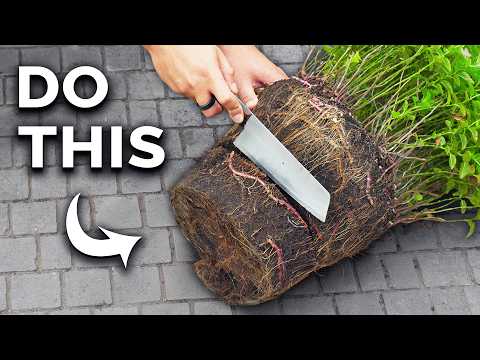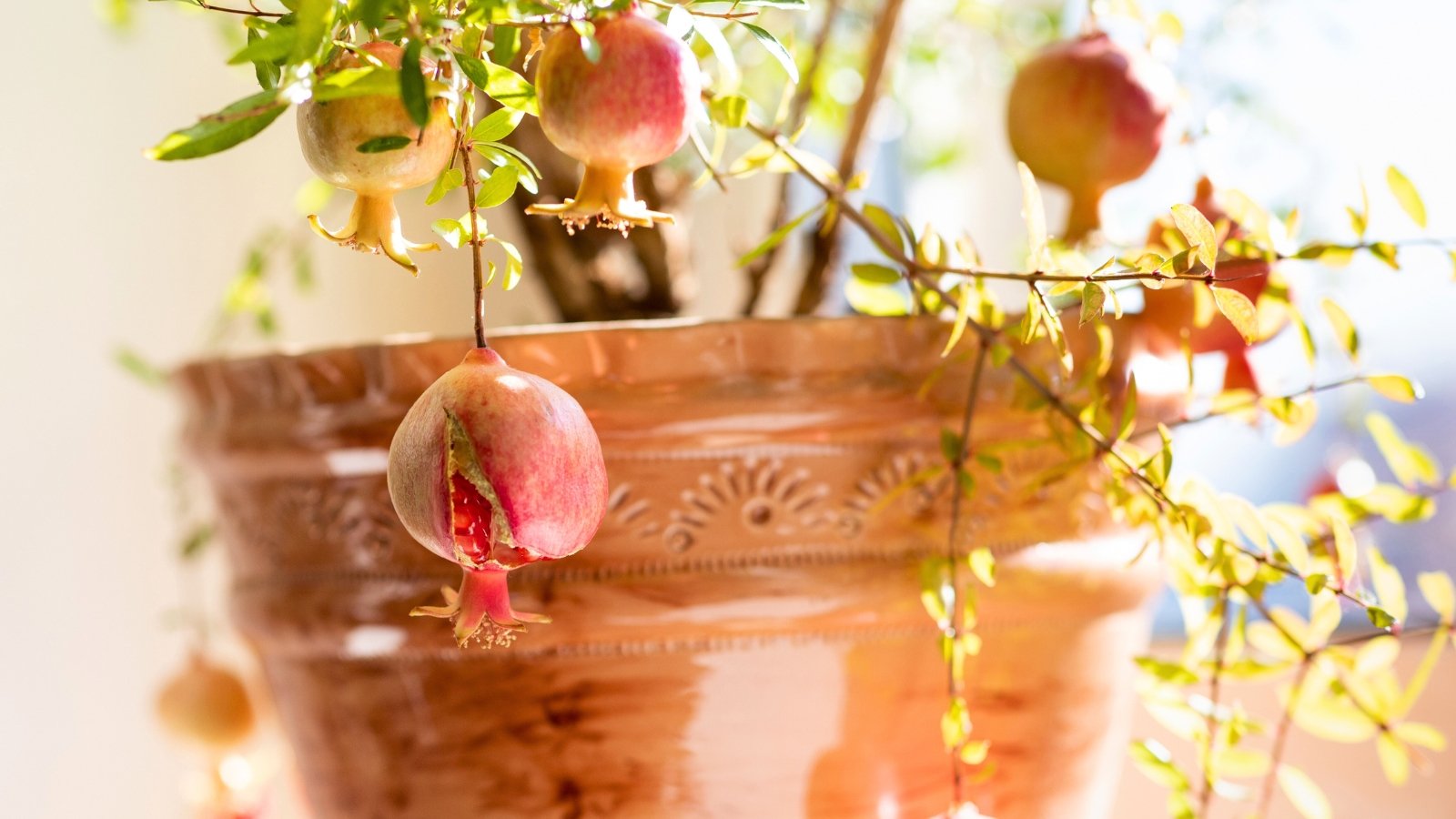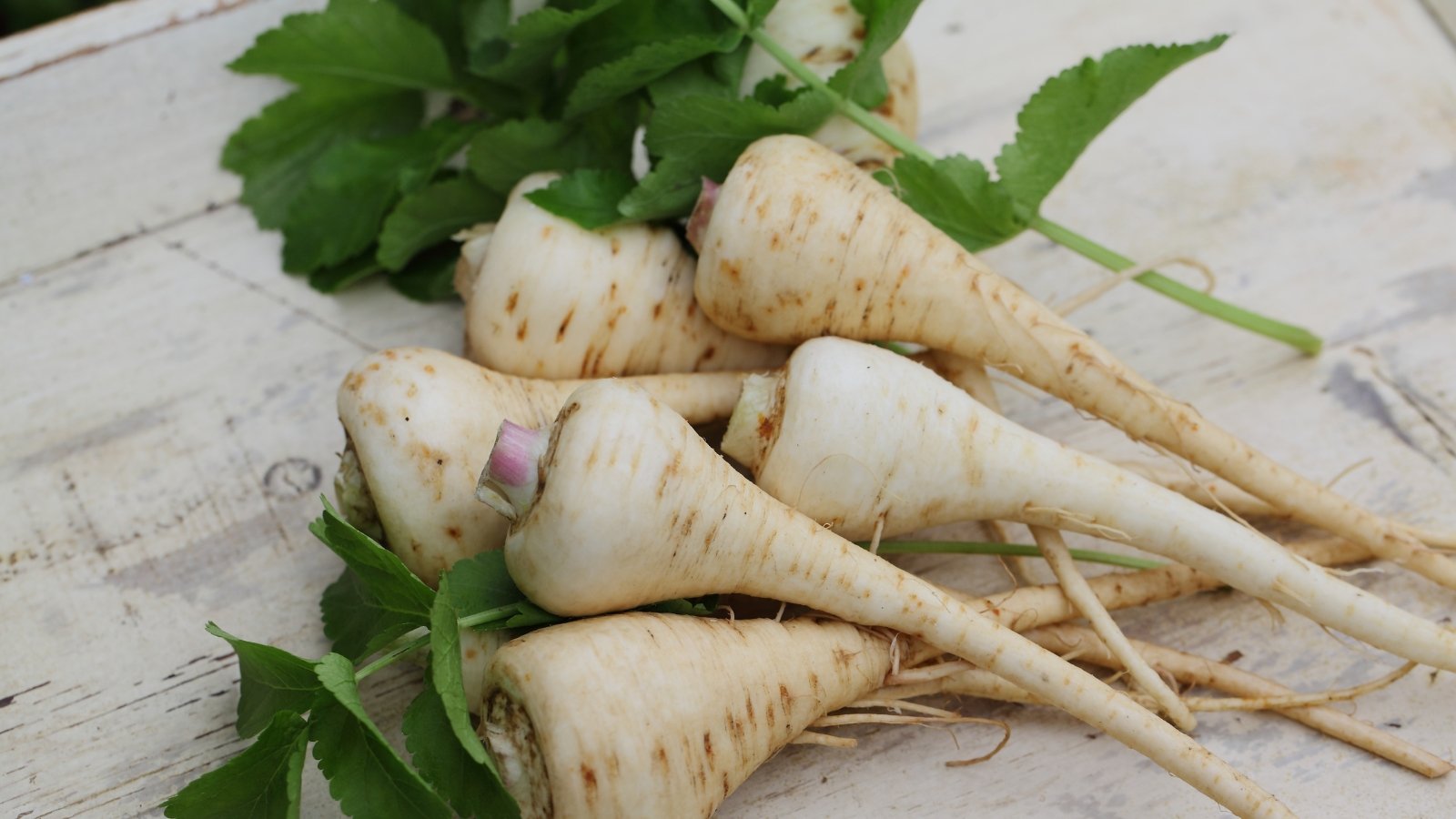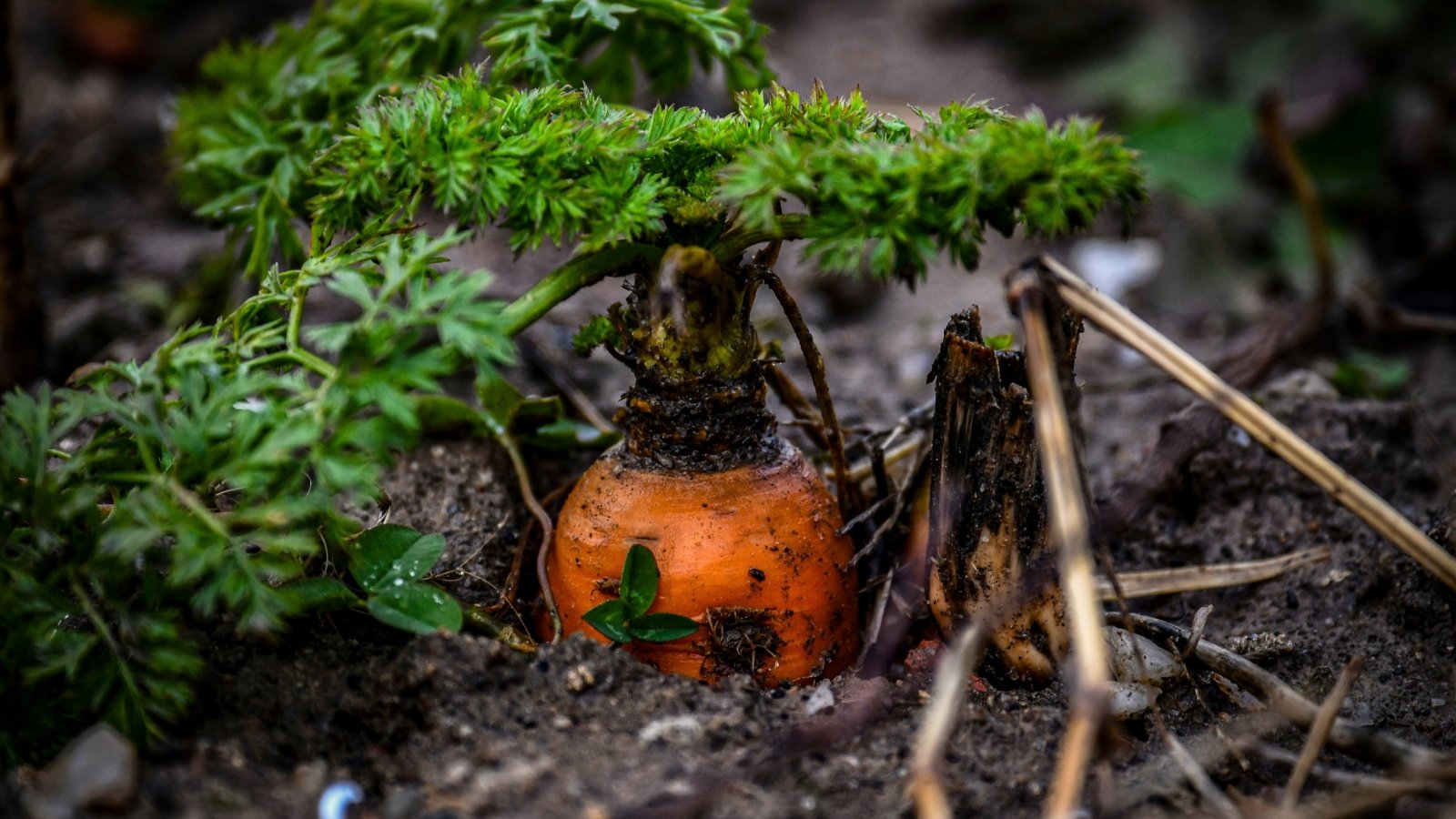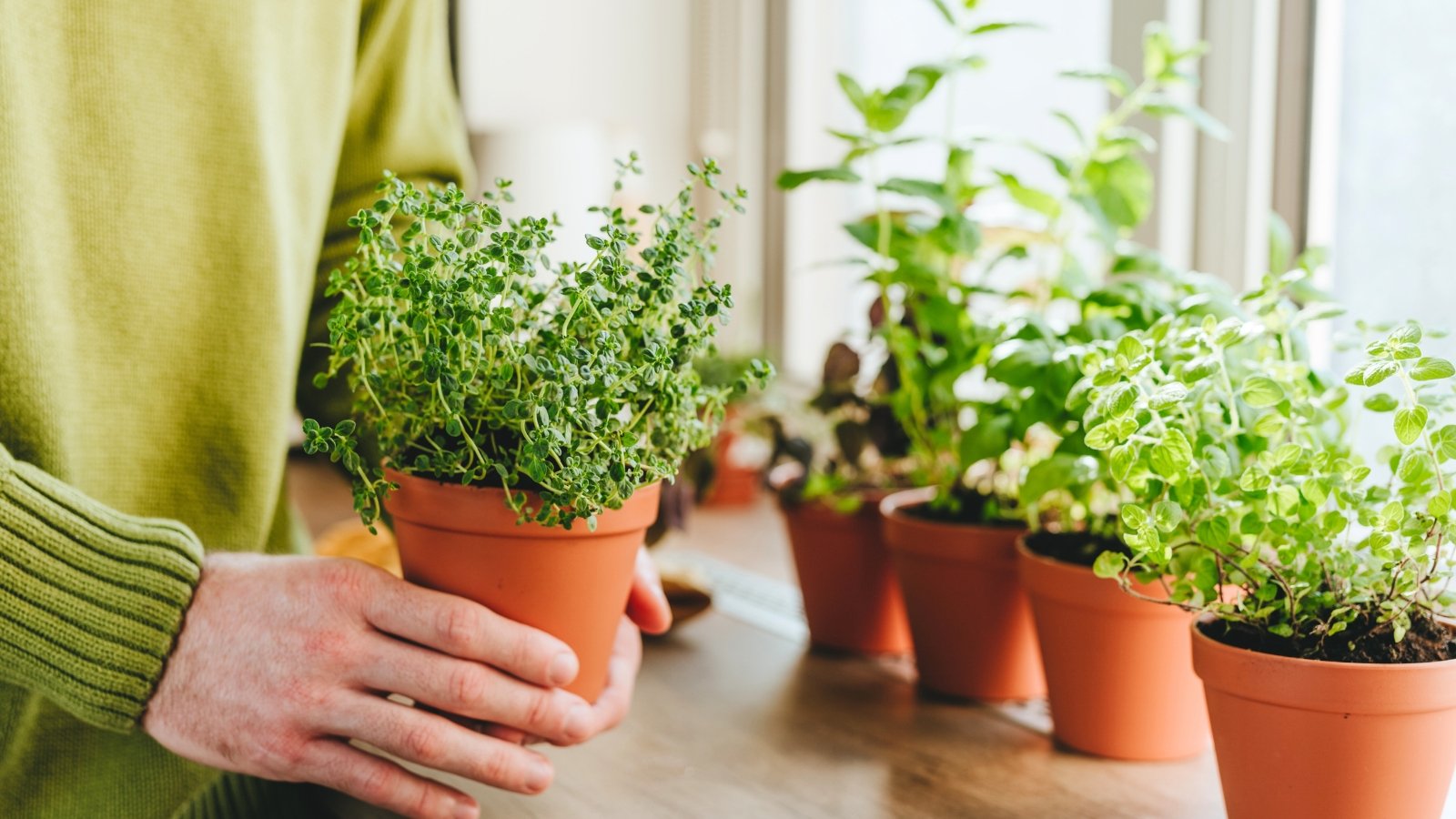
11 Herbs You Can Develop Indoors in Low Delicate
[ad_1]
Pure crops have specific compounds of their leaves that give them distinctive aromas. Contemplate the odor of lavender, a primary woody herb. It fills your nostrils with its scent, serving to you retain calm and serene. With indoor pure crops in containers, you’ll have these pleasing scents obtainable anytime.
Not all herbs tolerate the low gentle of indoor environments. They often need loads of daylight to create tasty flavors and sweet-smelling aromas. A method to help is to reap them generally—this retains them compact, bushy, and low-growing. The extra wholesome your specimens are, the additional leaves they’ll produce. Maintain them in tip-top type for the best-tasting herbs.
All crops need gentle, no matter how tolerant they’re of low gentle conditions. Darkish corners, windowless rooms, and closets aren’t good in your herbs. The underside-lit scenario it’s essential to use is near a window with indirect daylight. Fear not, as we’ll uncover a few herbs to try rising indoors if your personal house has low gentle publicity.
Can Herbs Develop in Low Delicate?
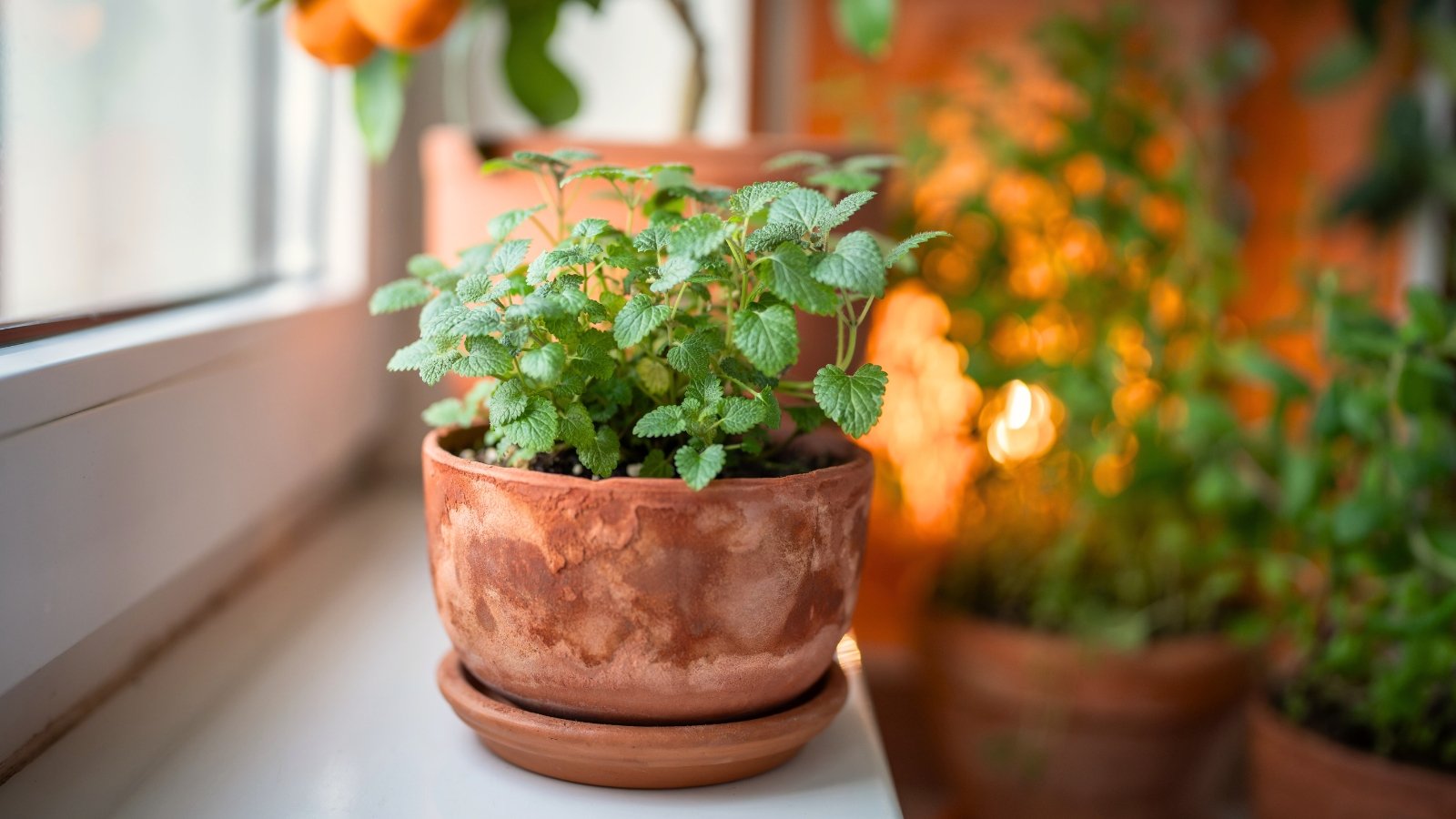

Herbs can develop beneath low gentle, although they’ll need some assist to hold out their most interesting. In case your rising room has no house home windows or outside crops block most sunrays, your herbs might admire develop lights to enhance their lighting. Develop lights flip any darkish room proper right into a well-lit indoor yard. They use comparable gentle frequencies as a result of the photo voltaic, creating good conditions for crops like mint, culantro, and cilantro.
Set your develop lights on a timer for easy cultivation so that you just gained’t have to indicate them on and off every day. Set your timer to twelve hours on and twelve hours off in winter, and depart them on for longer all through spring and summer season. By altering the “on” hours, you simulate outside daylengths so your crops develop correctly all yr lengthy.
If your personal house has house home windows with vivid indirect gentle, you’re in luck! Some herbs will develop their most interesting with vivid indirect gentle all day, whereas others thrive with additional gentle as a lot as full photo voltaic conditions. Give your crops as quite a bit gentle as attainable, and monitor them to ensure they’re performing their most interesting. It took me many tries to hunt out good locations for my indoor herbs, and it would take some experimenting to hunt out the proper low gentle spot in your home.
Low Delicate Tolerant Herbs
Now that everyone knows how quite a bit gentle our herbs need, we’ll switch on to the pleasing part of selecting the proper species! I prefer to advocate choosing herbs you use generally, that method you’ll have a mild present in your culinary and tea-making desires.
Peppermint
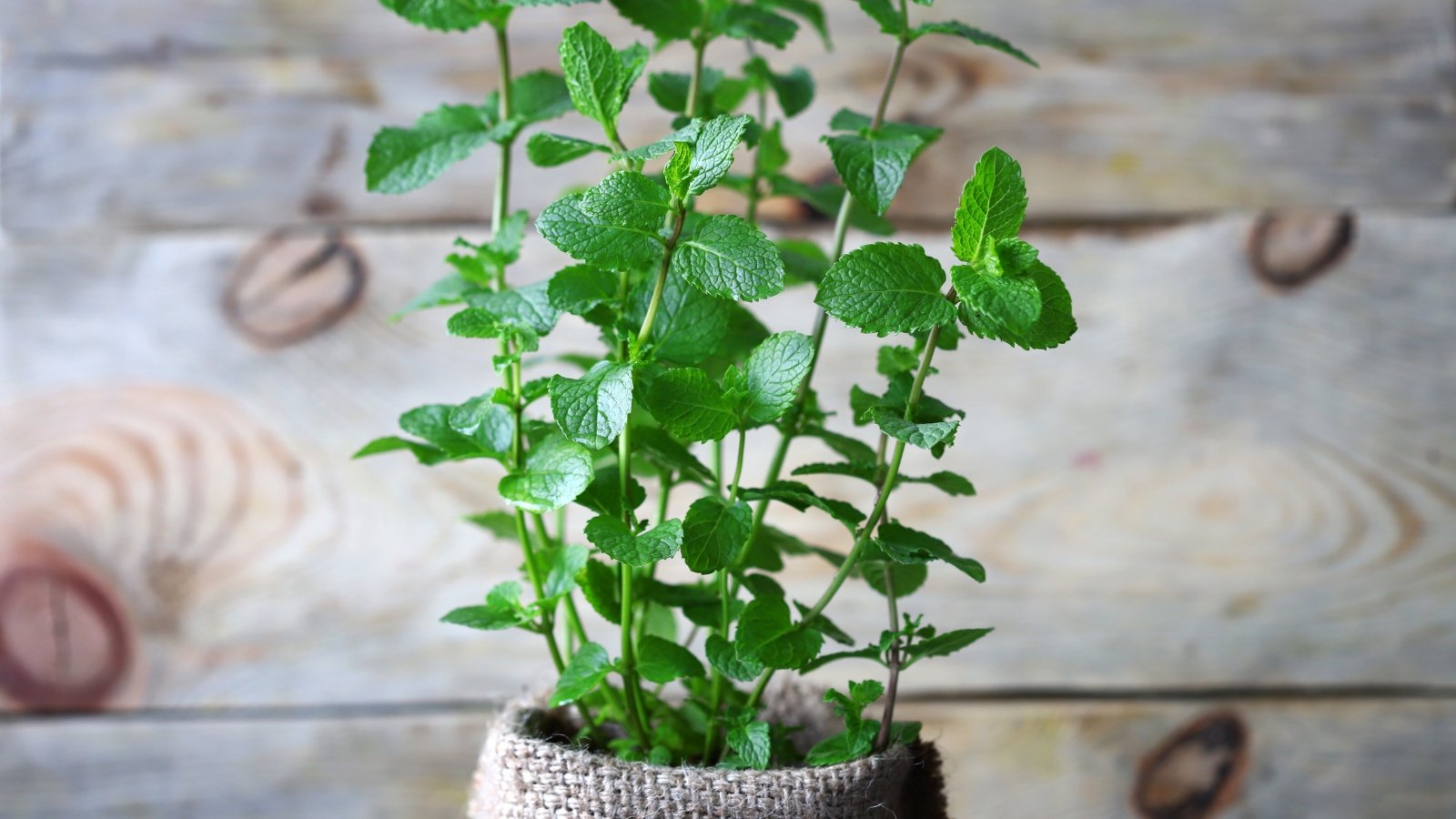

Peppermint fills your nostrils with minty fragrance when you cross by it. That’s the well-known mint that flavors candy canes, toothpaste, and tea blends. It tends to be unruly exterior, rising thick underground rhizomes that creep into shut by crops. Develop it indoors in a container and in addition you’ll limit its unfold whereas nonetheless having enjoyable with its pure benefits.
Peppermint might develop leggy in terribly low gentle conditions. You’ll uncover extended stems with few leaves, and they also’ll attain for the sunshine. Switch your specimen nearer to the window and prune it once more to help it hold compact. The additional you pinch its stems, the bushier it’ll develop into.
Mint is in distinction to most completely different herbs, rising readily from cuttings, divisions, or seeds. Use whichever starting approach is greatest for you and your setup. Merely root cuttings in a glass of water, then up-pot them into containers with soil. Seeds couldn’t develop true to form, and cuttings or divisions are the surest strategies of propagating clones.
Spearmint
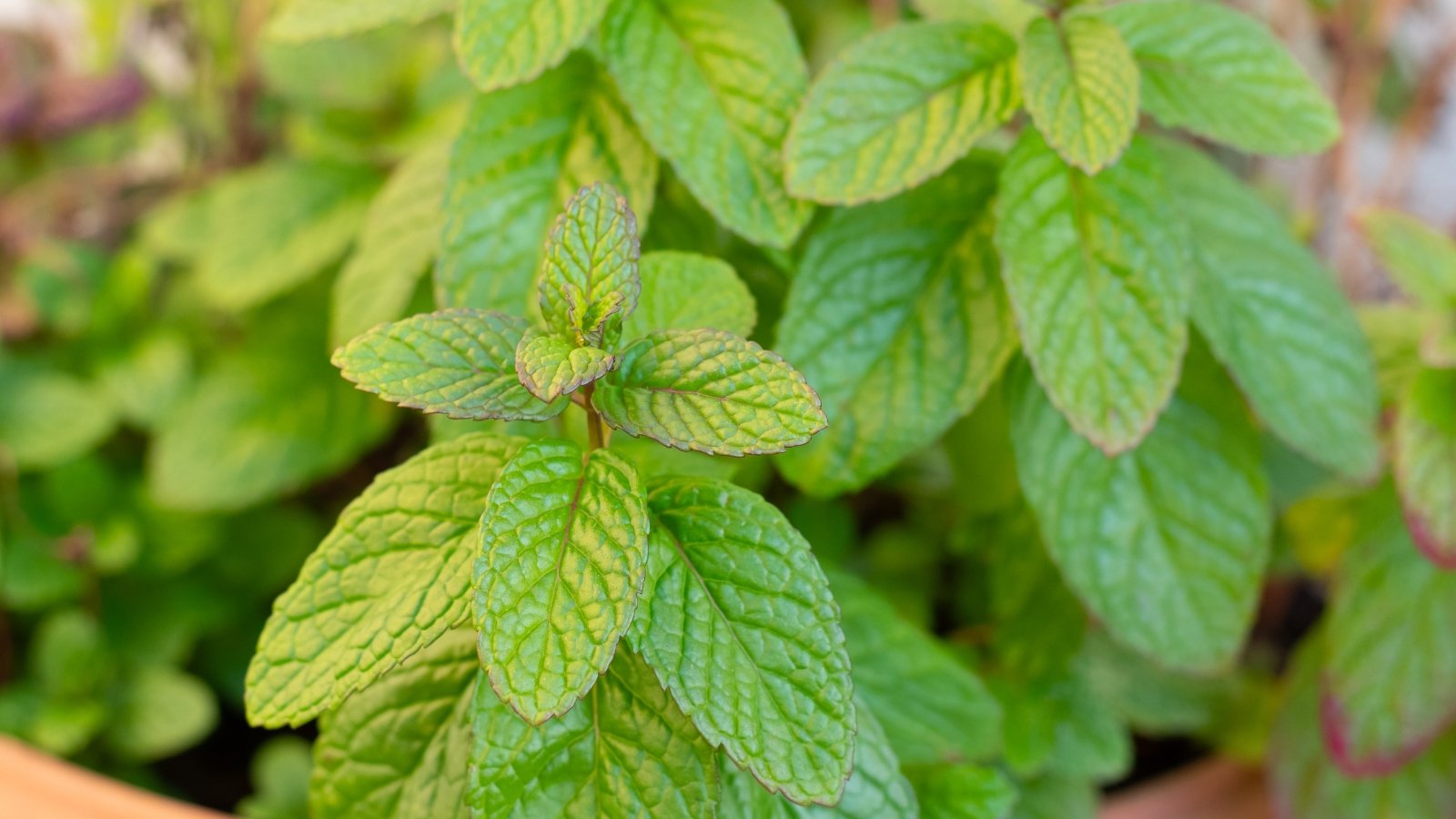

Spearmint is among the many mum or dad crops of the hybrid peppermint! It’s a lot much less cooling than peppermint, although its style is among the many most interesting for all mints. Develop this kind while you prefer to make use of this herb in sauces, tabbouleh, or tea blends. Whether or not or not current or dried, it presents off a pleasant aroma that lends superb style to irrespective of you add it to.
Your spearmint might flower in summer season when it grows near a window receiving pure gentle. The blossoms are edible, although they’re lighter tasting than the leaves. Scale back them off sooner than they open so your plant redirects its energy within the path of manufacturing additional leaves. It is doable you will depart the blossoms while you’d prefer to make use of them for bouquets, infusions, or tea.
Start spearmint crops from cuttings or divisions, since most mint seedlings gained’t develop like their mum or dad plant. Root cuttings in a water glass, or strip them of their lower leaves and pot them in moist soil. They’ll root after two or additional weeks with common publicity to low gentle and moisture.
Chocolate Mint
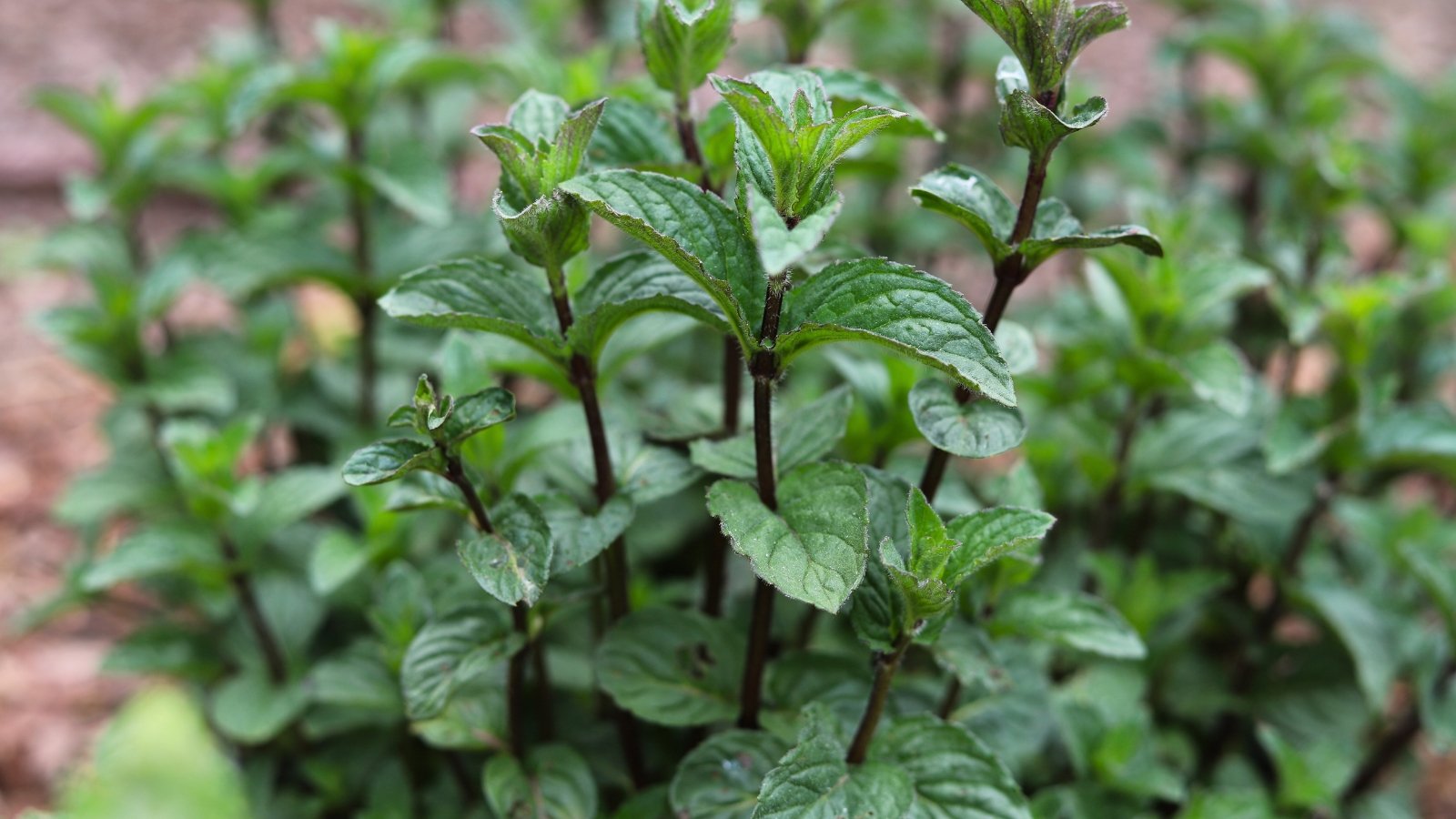

Chocolate lovers ought to try rising this mint! It’s a bergamot mint with a particular chocolate style and aroma. It grows like bergamot mint, with small oval leaves and white-pink blossoms. With an indoor specimen, you’ll have ready chocolate essence in order so as to add to desserts, drinks, and recipes. Place a few leaves in your scorching cocoa for a minty, chocolate combine!
Chocolate mint thrives beneath low gentle conditions exterior so long as it receives between two and 6 hours of direct daylight. When your indoor home has vivid indirect gentle all day, or better than two hours of direct daylight, your specimens will fare correctly. If there’s a lot much less gentle publicity than these conditions, it’s possible you’ll have in mind together with develop lights to your setup.
Like all of the yard mints, this kind requires divisions or cuttings to propagate true to form. Uncover a plant {{that a}} neighbor, pal, or member of the household has to take cuttings or provide potted crops from nursery retailers.
Cat Grass
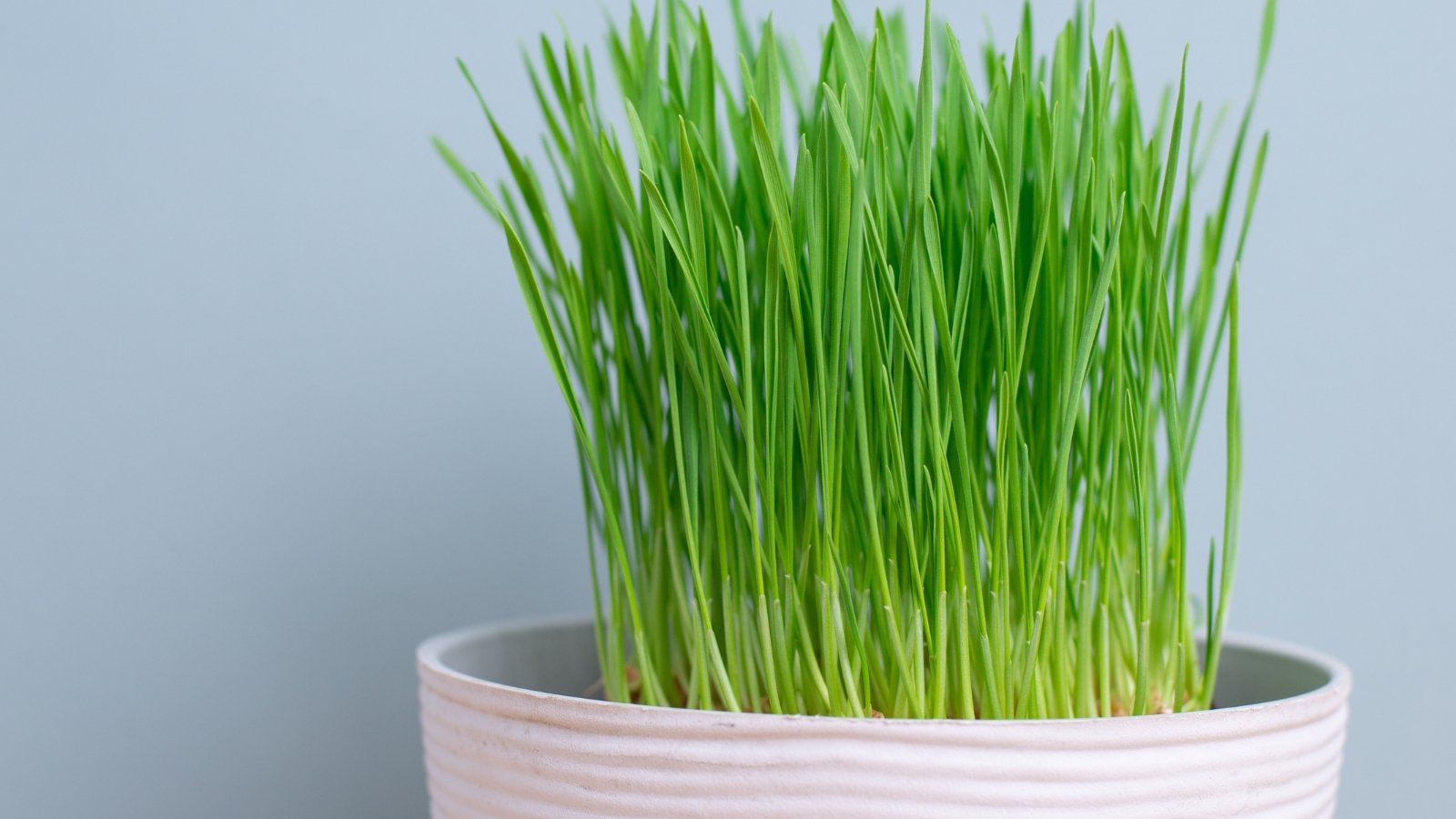

Cat grass is a mixture of oats that sort tender, inexperienced shoots indoors. It’s the suitable indoor herb for kitty lovers who must introduce fiber and dietary nutritional vitamins into their pets’ diets. Depart a pot of cat grass spherical your kitties’ meals bowls, and they also’ll start snacking on it all through mealtime.
This herb is right for indoor locations with low gentle, as an extreme quantity of daylight might make the grass develop sturdy and chewy for kitties. The grass is ready to eat when it reaches two to 4 inches. It is doable you will trim it if it grows too leggy to encourage additional grass shoots.
The best option to have a gradual present of cat grass is to sow seeds every two to three weeks. Use a small container so that you just protect your seed present. After about three weeks, the grass loses energy and struggles indoors. With successive sowings, you’ll under no circumstances run out of current grass in your fur infants.
Frequent Chives
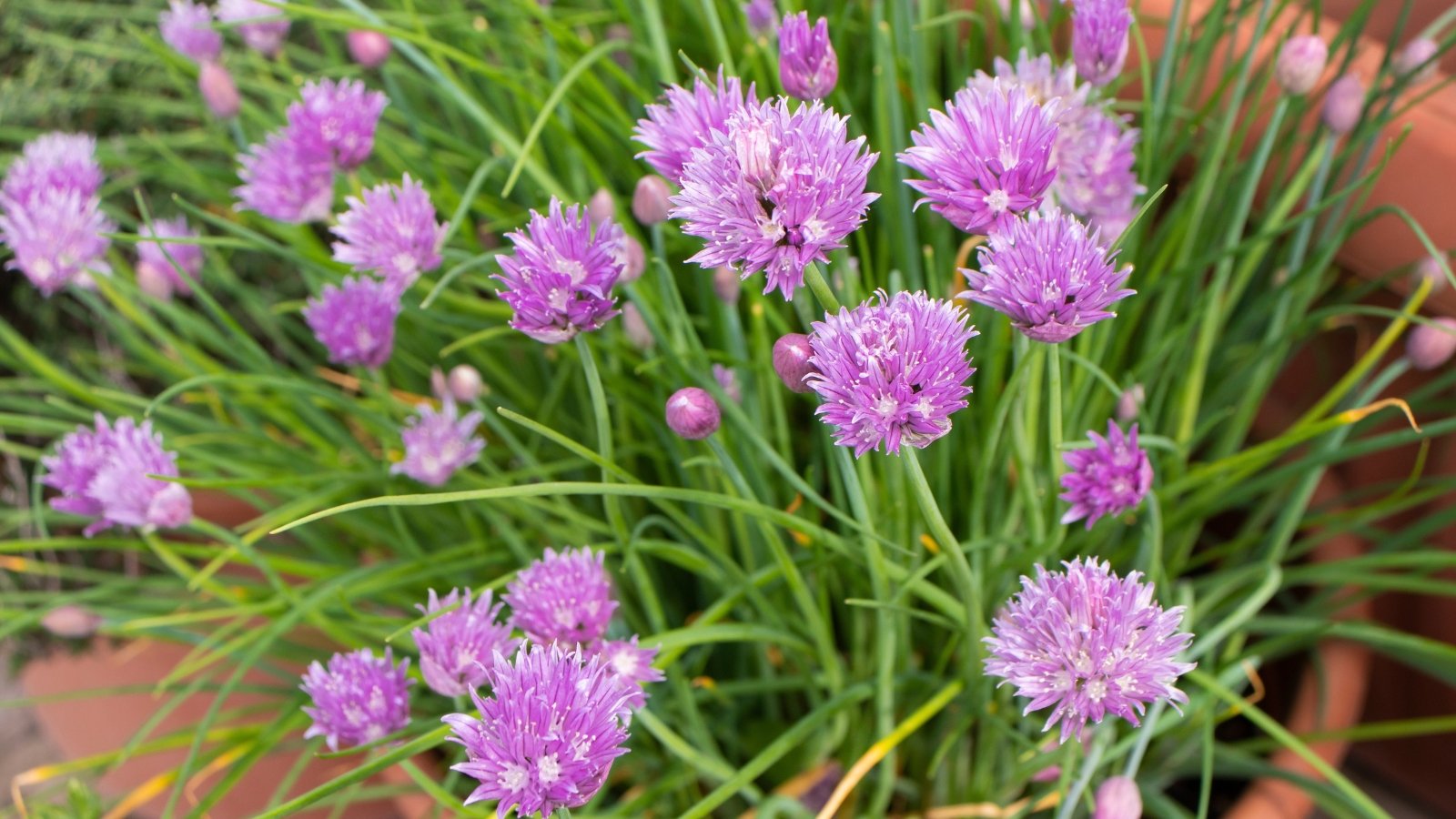

Chives are perennial onions that sort slender, inexperienced shoots. The leaves have a milder style than onions; they’ve the pungent type of onions nevertheless are sweeter with hints of honey. The purple flowers are edible similar to the leaves nevertheless with additional sweetness! Develop chives indoors while you keep outdoor of its hardiness differ, or while you’d like ready entry to onion style without having to enter the yard.
On account of they’re perennial, you can plant chives seeds as quickly as and have harvestable onion leaves for years. In case your crops develop leggy, lack new shoots, or exhibit yellowing leaves, switch them to a brighter location or add develop lights above them. It is a fantastic kitchen windowsill herb—it gives freshness to salads, soups, and dishes like baked potatoes.
Start chives from seeds or dig up a cluster from a close-by plant. Mature specimens form new bunches near their perimeter with separate roots. Dig them up and divide them from the mother plant, then transplant them into pots with fertile, well-draining potting soil.
Garlic Chives
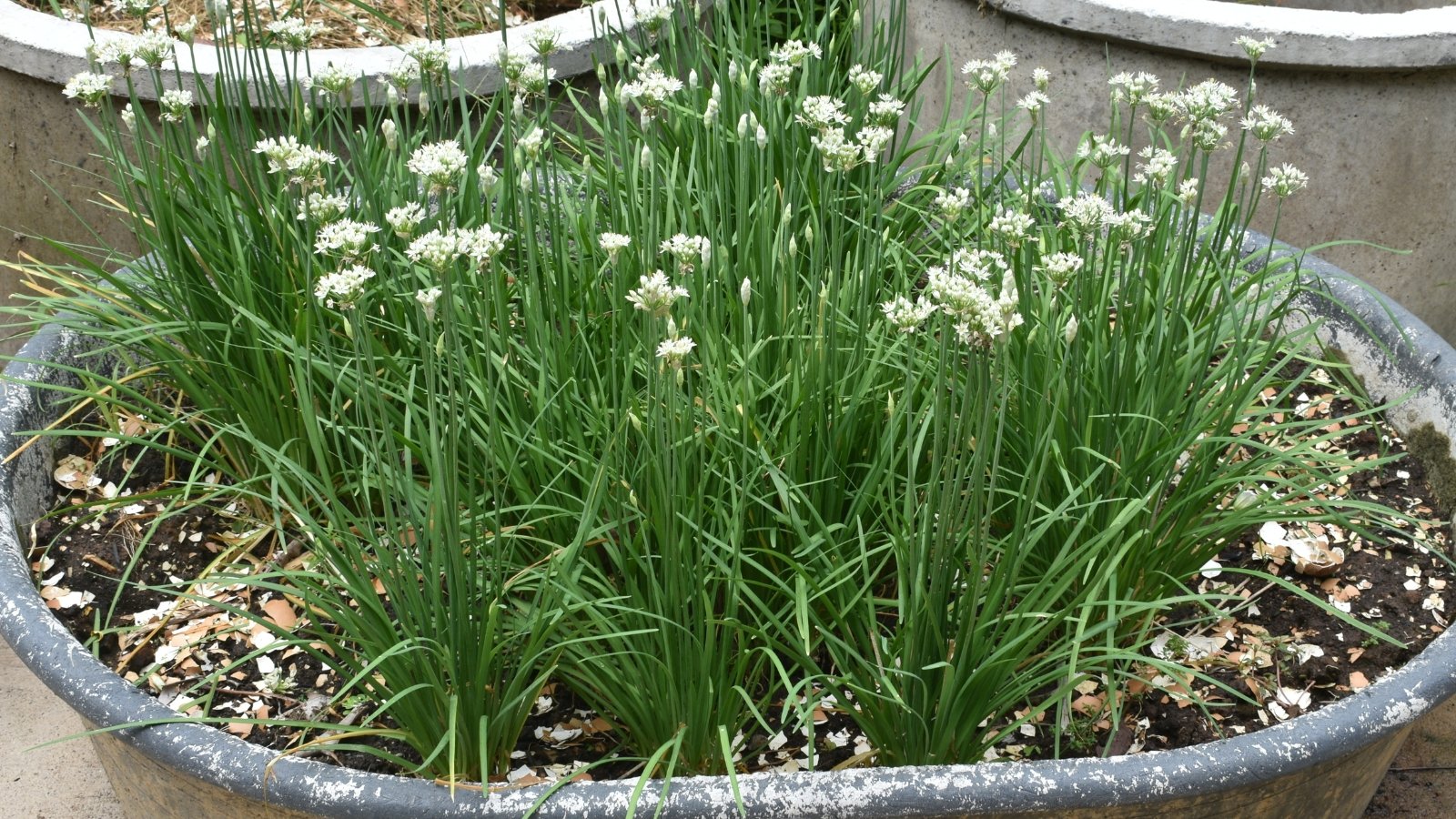

Garlic chives are one different perennial onion with delicious, sweet leaves and flowers. Their flowers are white in its place of lavender-pink and are milder tasting than the leaves. Use the shoots, buds, and flowers current in dishes, or prepare dinner dinner them in sautés, scrambles, and stews.
These chives need comparable conditions to those of frequent chives, although they’re additional frost and drought-tolerant than their members of the family. Develop them in containers shut to chill house home windows and they also’ll thrive all by means of the seasons. Use seeds to begin out them, or uncover potted crops obtainable from spring by fall.
Garlic chives sprout their white flowers from spring by summer season, and your plant might bloom if it’s blissful indoors. Take into consideration bringing the container into the yard if it’s warmth and sunny exterior. The blooms attraction to useful pollinating bugs that admire free nectar and pollen!
Parsley
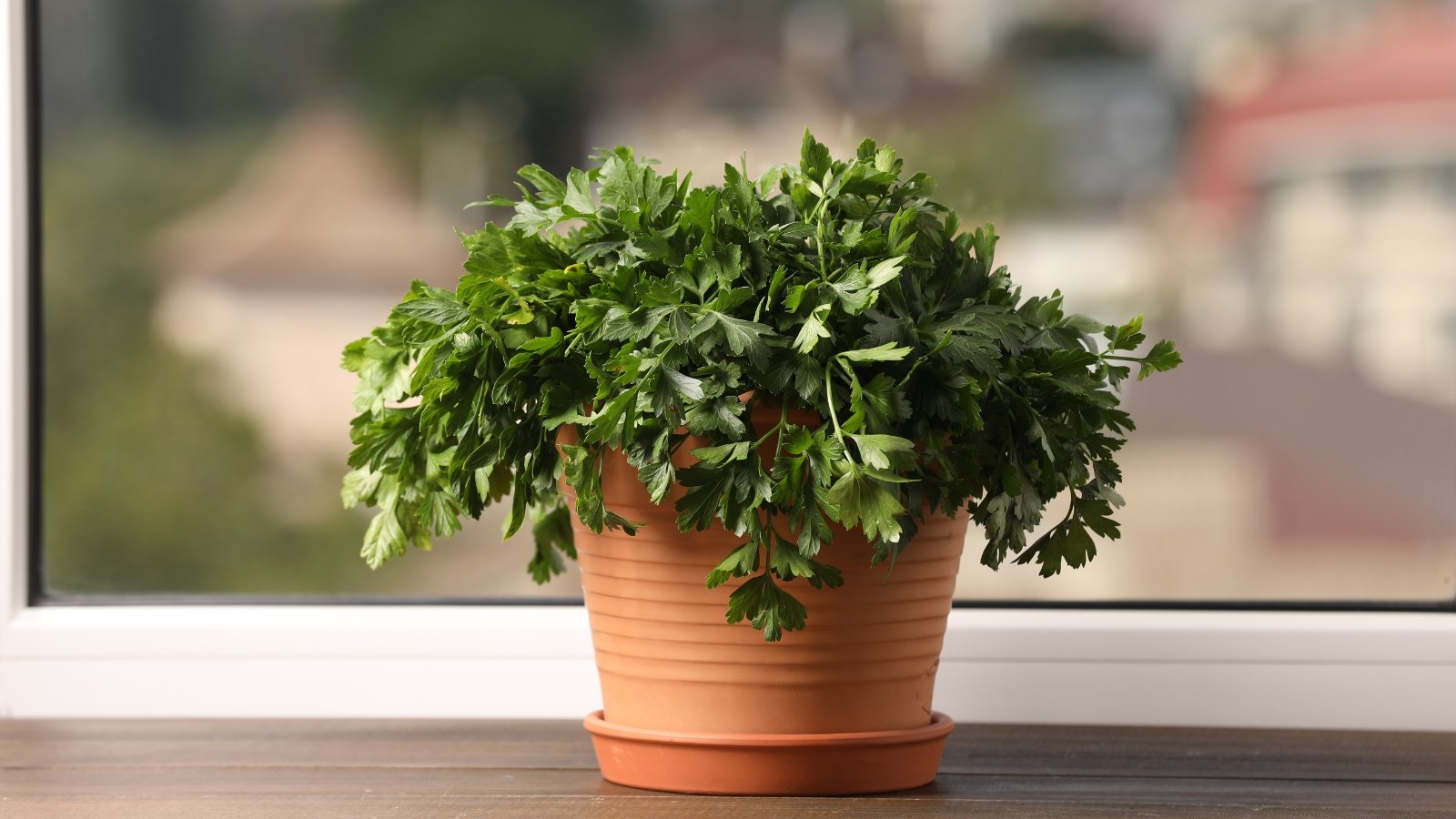

Parsley is an annual herb vital for lots of dishes from a lot of cultures. It gives a selected style in distinction to a different herb; mud it in tabbouleh, salads, pasta, pizza, and stromboli. On account of it’s an annual herb, it’ll develop merely indoors and be gradual to flower, which implies you’ll have parsley for longer with out successive sowing.
Indoor parsley might attain for the sunshine if it’s in too darkish of a room. Leggy crops are nonetheless edible, although they’ll be slow-growing. Harvest their outer leaves first and allow the within ones to proceed sprouting and photosynthesizing.
Start parsley from seeds in containers not lower than six to eight inches deep. The seedlings admire fertile, moist soil, nevertheless they’ll rot if it’s soggy. Use the finger test to understand how often to water. Merely place your pointer finger into the pot and see while you sense moisture beneath the ground. If it’s moist, preserve off on watering. If it’s dry, water aplenty until it comes out the underside of the pot.
Cilantro
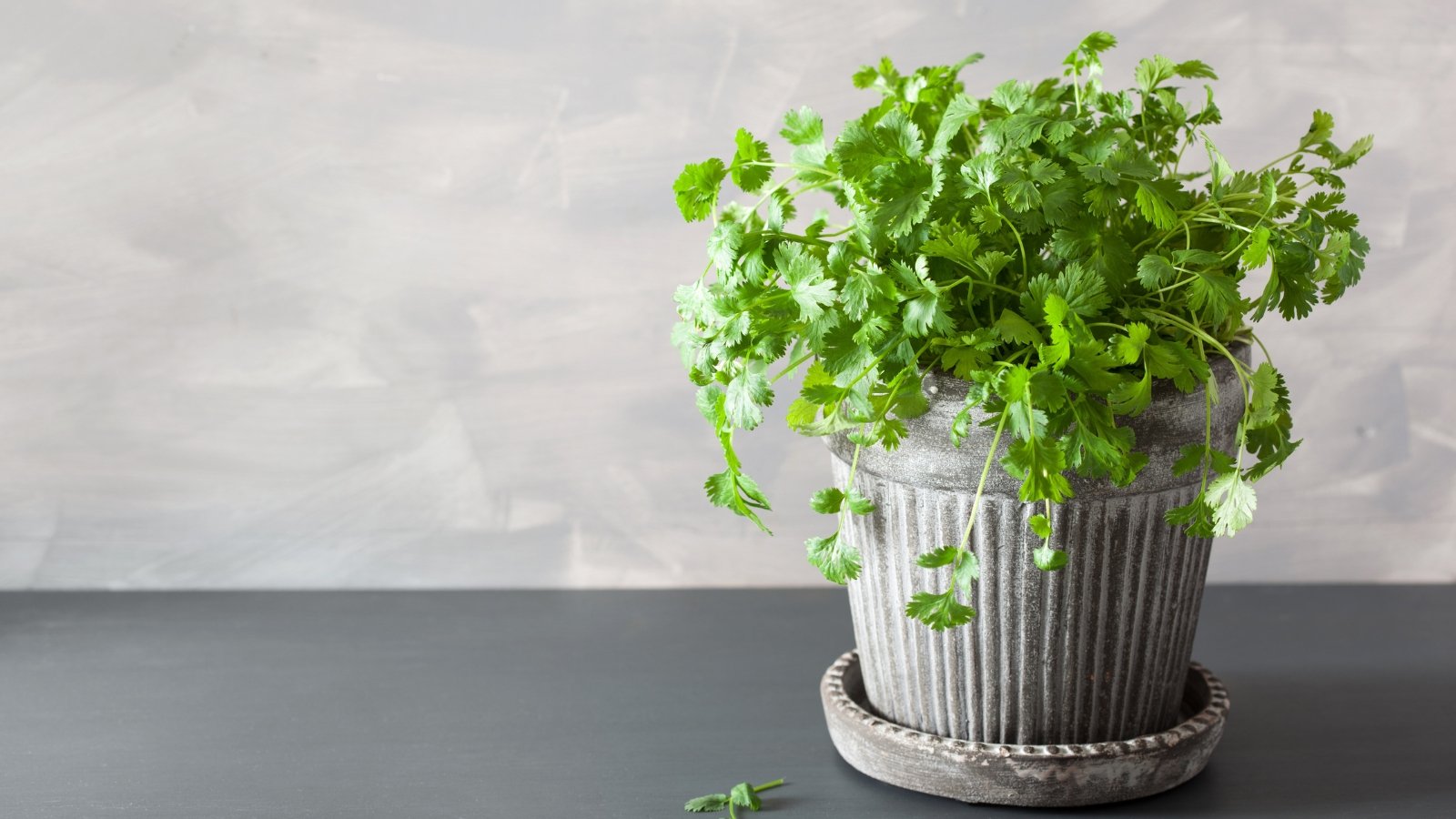

Cilantro, or coriander, is an annual herb that matures equally to parsley. It germinates in mild, cool local weather and bolts as quickly because the instances lengthen and temperatures warmth. The leaves lend a pungent essence current in dishes, and the seeds make the underside spice coriander. Use a slow-bolting choice for foliage, or a quick-bolting one while you need the seeds for spice.
Cilantro is an annual that dies after forming seeds. Collect and save these seeds for an limitless present of this herb. They’ll sprout readily when the soil temperature sits between 55-68°F (13-20°C). Maintain their roots moist nevertheless not soggy, and gives them adequate gentle to stay perky, inexperienced, and juicy.
Exterior cilantro blooms attraction to pollinating bugs like honeybees. Place your flowering specimens outdoor whereas they bloom, and the bees will pollinate the flowers. After worthwhile pollination, they’ll morph into seeds for easy accumulating. Retailer dry seeds in a cool, darkish location, and they also’ll ultimate a yr or longer.
Culantro
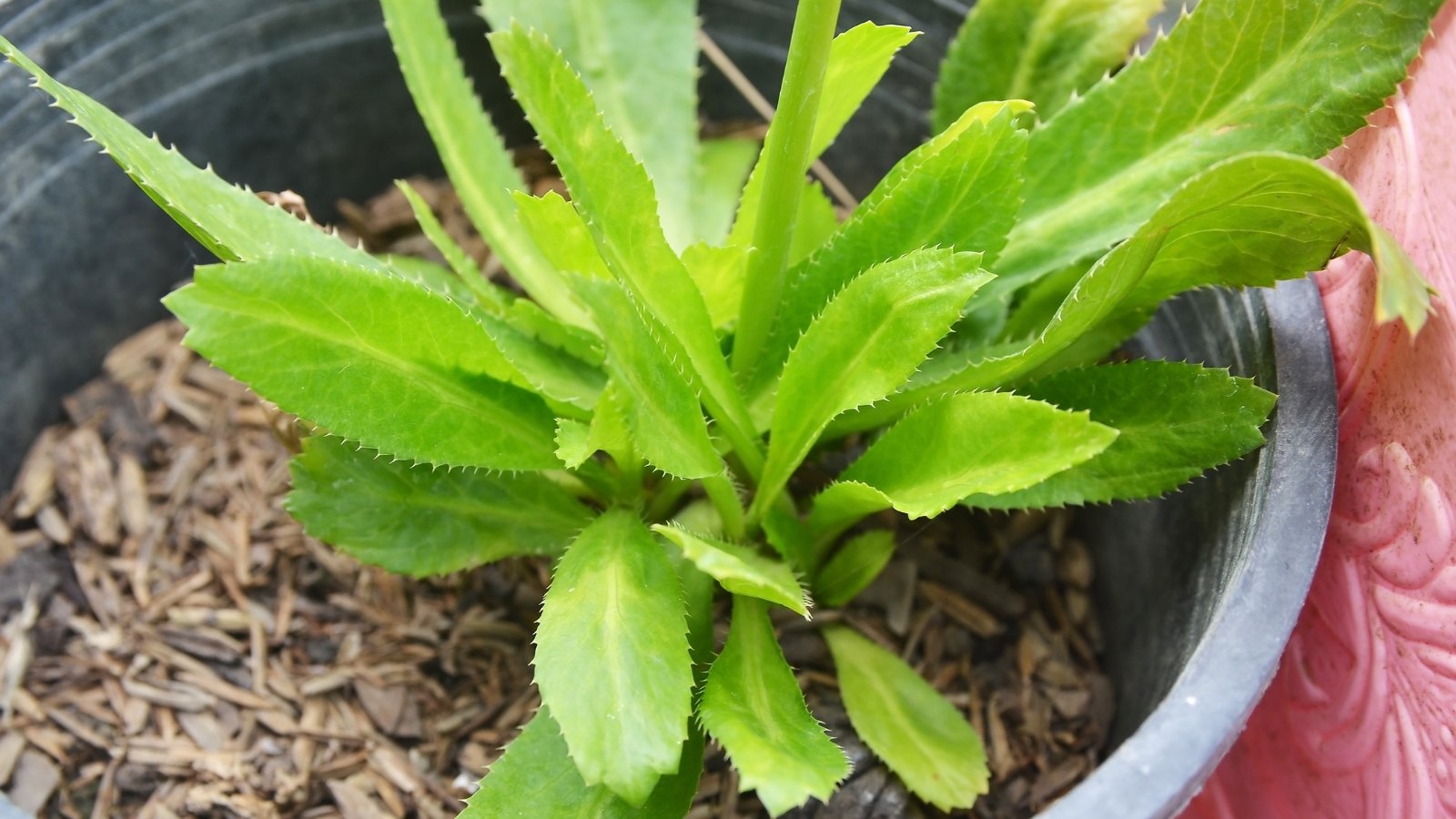

Culantro is an pure different for cilantro with a stronger style and further cookable building. It resists wilting in soups, stews, and marinades, injecting delicious cilantro-esque essence into your recipes. It’s lower rising than cilantro and varieties a rosette of prolonged leaves with rounded concepts. They’ll ship up flowers with white blossoms in summer season that resemble completely different Eryngium species’ blooms.
On account of culantro tastes stronger than cilantro, you’ll must sub every portion of cilantro for a half portion or a lot much less of culantro. The leaves are sturdy, and lowering them finely or mixing them in dishes helps improve their edibility.
Culantro begins readily from seeds and is a short-lived perennial. Develop it indoors for an merely accessible and pungent cilantro-like style, no matter how chilly or scorching it is exterior.
Lemon Balm
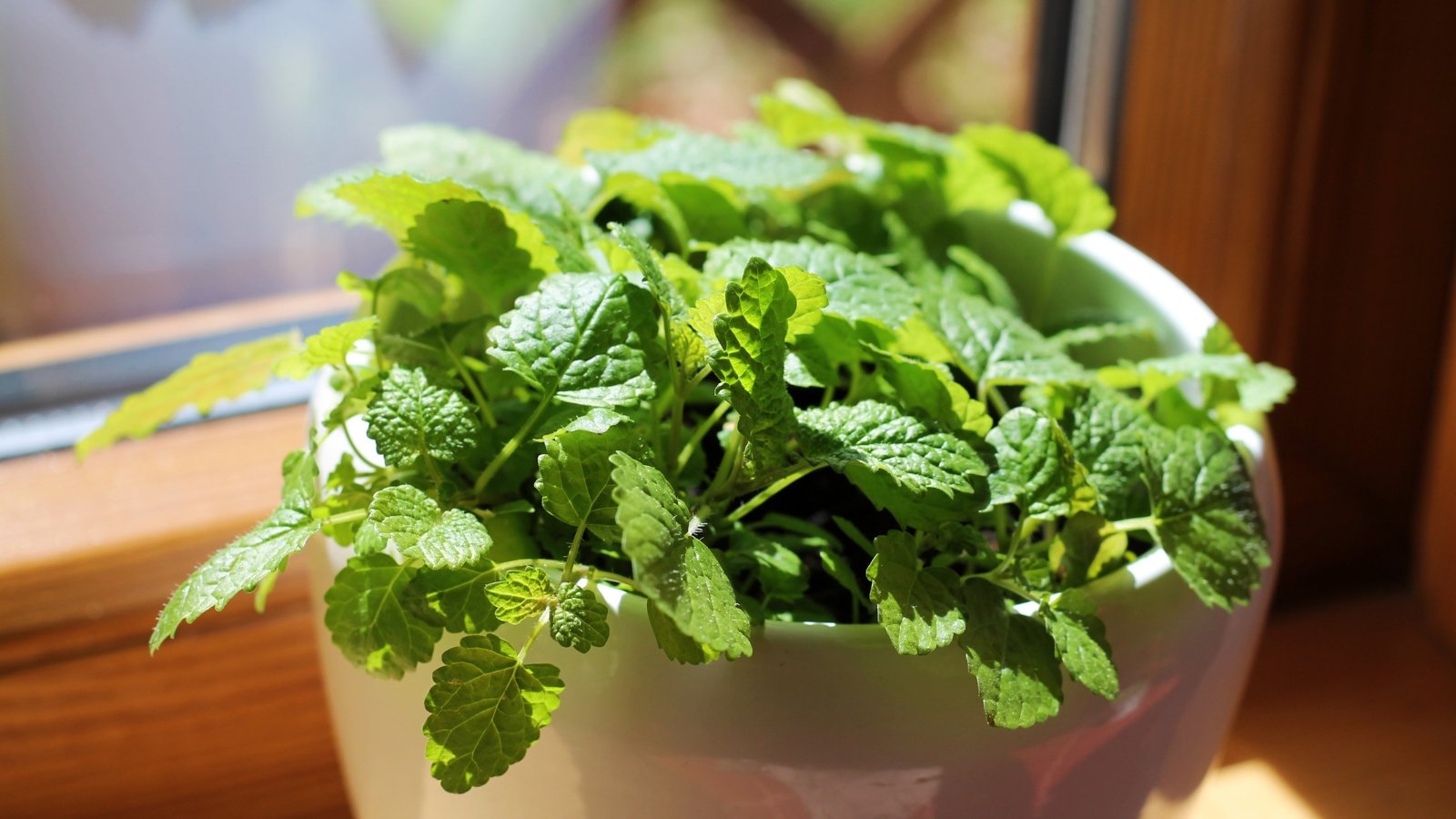

Tea lovers need lemon balm of their lives! This herb sprouts lemony leaves that lend superb pure style to tea blends, syrups, and desserts. The dry leaves preserve onto their fragrance for lots of months in long-term storage, so you can harvest them in fall, and they also’ll ultimate all by means of winter.
Within the occasion you’d need current lemon balm year-round, develop it indoors in a pot in its place! You’ll have lemony leaves no matter how extreme the local weather is exterior. Lemon balm sprouts shortly from seeds, which implies you can have a plant indoors and produce it exterior when it flowers. After worthwhile pollination, purchase and retailer the tiny black seeds as a backup in case your potted specimen dies.
Lemon balm is an aggressive sprouter, sending new shoots from hardy underground roots. Rising it in a planter is nice for limiting its unfold. You’ll benefit from its scent and elegance with out having to deal with its unruly invasive nature. Harvest crops by trimming their stems to encourage dense, bushy new improvement.
Chervil
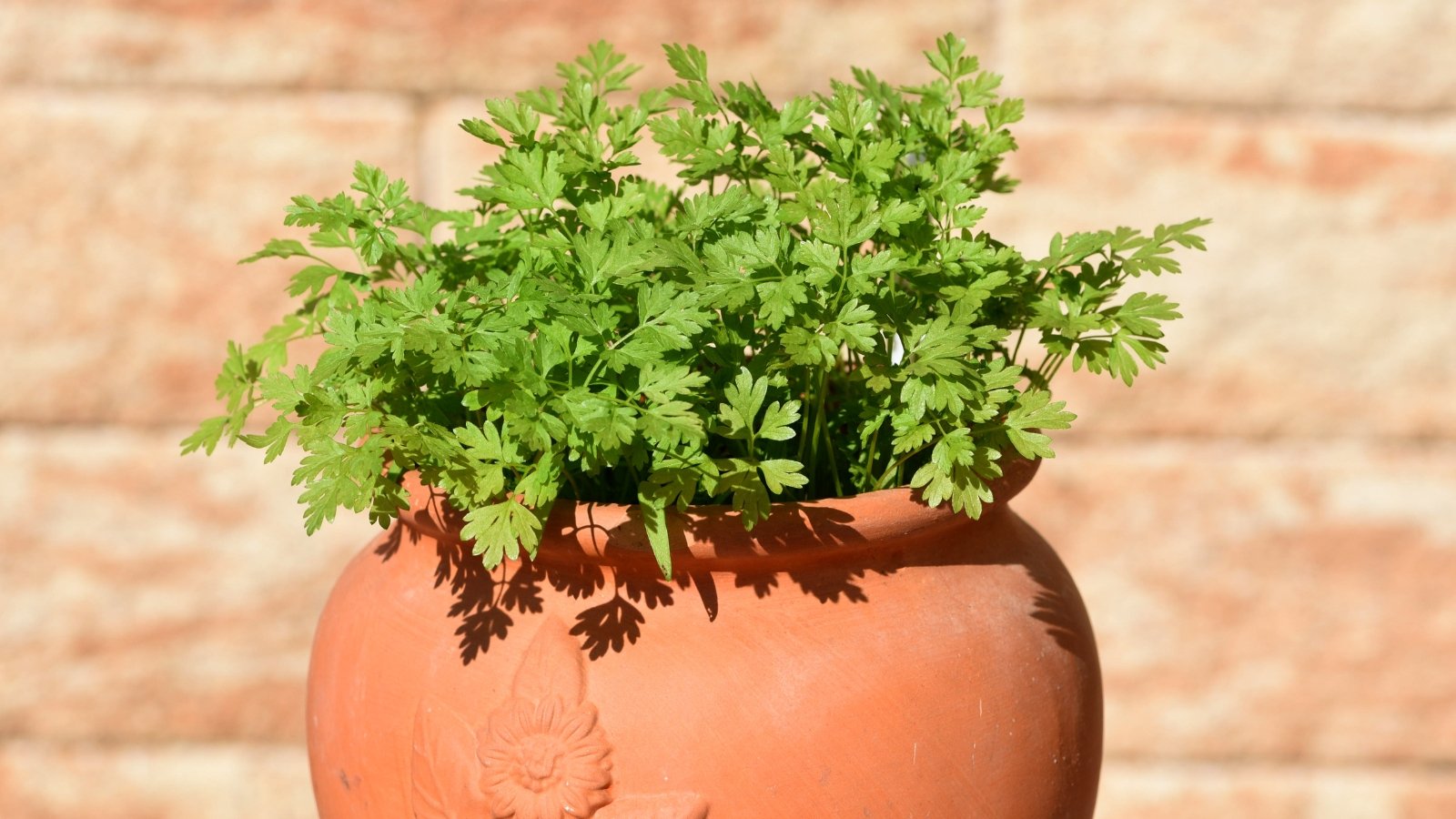

Chervil resembles parsley nevertheless is in a particular genera than the herb. Some growers title it French parsley attributable to its comparable look. Develop it as an annual for its current foliage, or let it sprout biennially so you can purchase seeds and sow additional seedlings. Indoor chervil will develop a really very long time with out bolting, making it a wonderful herb in your low gentle yard.
Chervil foliage has a slight hint of licorice style in it with a fragile essence of parsley. It’s good for flavoring meats, greens, and roasts. Dry the leaves and they also’ll crumble merely into your meals. In every other case, the current foliage works correctly in butter or oil infusions, scrambles, and pure salads.
Start chervil seedlings from seeds. They need gentle to germinate, so give them direct daylight or develop lights whereas youthful. Older specimens survive in low gentle; within the occasion that they exhibit yellow leaves or gradual improvement, have in mind transferring them to a brighter location. Assure their soil stays moist, not soggy, and they also’ll thrive for lots of months in your home.
Key Takeaways
- Many herbs survive in low gentle nevertheless thrive with better than two hours of direct sunshine. Maintain an in depth eye in your herbs to ensure they hold happy with little gentle.
- Low gentle can suggest vivid indirect gentle, two or fewer hours of direct daylight, and artificial lighting from develop lights. Try to match your indoor conditions with the herbs’ hottest pure environments.
- With a lot much less gentle, crops develop slowly and are typically leggier than their outside counterparts. Regulate your watering schedule to match their thirst ranges to avoid drowning their roots.
- Within the occasion you’re unsure whether or not or not an herb will develop indoors or battle to survive, try it out! The worst that may happen is it dies after a few weeks and in addition you be taught additional about your herbs’ desires.
[ad_2]
Provide hyperlink
